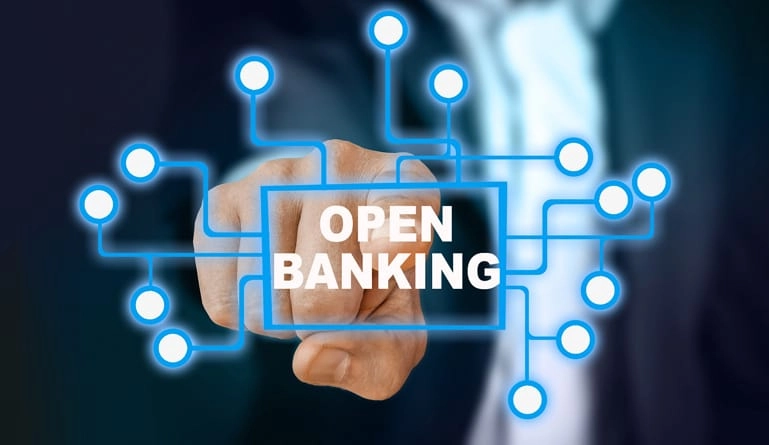Open banking is one of the most significant changes in the financial sector. It refers to a method by which banks and other financial institutions share data with third-party companies through secure APIs (application programming interfaces). Customers can share their financial data with trusted platforms, gaining access to new products, services, and personalized financial solutions. With traditional banking, customer data typically remains with a single bank. Open banking, on the other hand, fosters competition, openness, and innovation. It transforms the way individuals and businesses manage money, purchase financial products, and conduct business. Open banking is gaining popularity worldwide and is transforming the future of the financial sector in the digital age. It gives customers more power and choice than ever.
What Does Open Banking Mean?
Users of open banking services should be able to choose how their financial information is shared and used. Previously, only banks could guarantee the security of customer data, limiting its use outside the bank. Open banking is different: banks share securely encrypted financial information with registered third-party service providers. Open banking enables customers to use budgeting apps to track income and expenses across multiple accounts. This approach connects many different financial services and offers new insights and a better customer experience. Open banking breaks down barriers to financial data, stimulates competition, and enables banks to deliver better, more customer-focused services.
How Open Banking Actually Works
Secure APIs act as digital bridges, allowing different systems to communicate securely with each other, making open banking effective. With the customer’s consent, banks share certain information with external parties. This information can include account balances, transaction history, or spending habits. Banks can use this information to provide personalized financial advice, help people find more suitable loans, or recommend investment opportunities. Security is paramount, and only authorized and compliant companies have access to this data. Customers still have the choice of what information they share, with whom, and for how long. In practice, open banking simplifies money management by giving individuals and businesses easy access to a wider range of financial services, often through simple applications.
The Benefits of Open Banking
Every customer and financial institution benefits from open banking. It simplifies and streamlines operations for users and helps them gain better insight into their finances. Users can view all their accounts on a single platform, compare products more quickly, and receive recommendations based on past transactions. Businesses also benefit by gaining more profound insight into customer behavior, allowing them to develop new services tailored to their needs. Open banking allows banks to collaborate with fintech companies instead of competing with them. This strengthens the ecosystem and creates new ways for banks to generate revenue. Open banking enables more people access to better financial services, even those that traditional banking systems can’t handle effectively, making these services accessible to everyone.
Pros and Cons of Open Banking
Open banking exhibits significant potential, yet it presents certain challenges that require attention. Data security is the primary concern. When data lacks proper protection, its vulnerability to leaks increases with increased sharing. Different regulatory frameworks in different regions mean that the speed of adoption and implementation varies globally. Another problem is that, even if the system is secure, many people are still reluctant to share their banking information with strangers. Banks and fintech companies must earn people’s trust through openness, trust, and regulatory compliance. Smaller banks may struggle to bear the technical and regulatory costs of open banking, which can lead to market imbalances. These issues highlight the importance of strong leadership, continuous improvement, and robust security measures to ensure the safety of open banking.
The Future of Open Banking
Open banking is still in its infancy, but the future looks bright. As technology advances and consumer confidence grows, the system will likely transform into open finance. Open finance encompasses not only banking data but also information on insurance, pensions, and investment accounts. This gives customers a complete picture of their financial situation, enabling more personalized services. Governments and officials worldwide are pushing for greater standardization. The outcome will make open banking safer and more accessible to more people. As artificial intelligence and machine learning become increasingly prevalent, they will further enhance open banking, enabling smarter financial advice and predictions. We can expect open banking to become the industry standard in the coming years, not the exception. This will change the way individuals and businesses use financial services.
Conclusion
Open banking is not just a new technology for standard banking; it represents a significant shift in the way financial services are offered and consumed. By enabling customers to securely share and manage their data, it enables personalized, open, and innovative solutions. These solutions benefit every member of the ecosystem. While there are security, regulatory, and customer trust challenges, the potential benefits far outweigh the risks. Open banking empowers users, fosters competition, and increases access to money, making banking simpler and faster. As more people worldwide embrace open banking, it will continue to evolve into a more comprehensive system, like open finance, which affords customers more control over their money. Both consumers and businesses should learn more about open banking, as it represents the future path to managing money and achieving financial freedom in a digital world.
FAQs
1. What is open banking?
Open banking allows customers to securely share their financial information with authorized third-party providers, enabling them to provide better financial services. This gives customers greater financial autonomy.
2. Is it safe for me to use open banking services?
Yes, as long as you work with authorized providers, open banking services are safe. Strict regulations and high-tech security measures protect customer data.
3. How does open banking help people?
It makes the customer experience easier, clearer, and more personalized by offering customers better financial products, budgeting tools, and exclusive insights.
4. Will open banking replace traditional banks?
No. Open banking won’t replace banks; it will transform them. Banks will no longer be the only financial service providers.
5. What is the difference between public and general banks?
Open banking primarily involves the sharing of banking data, whereas open finance extends its scope to include insurance, pensions, investments, and other financial products, thereby offering a comprehensive financial picture.



